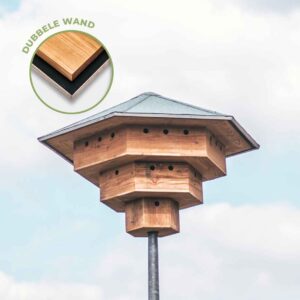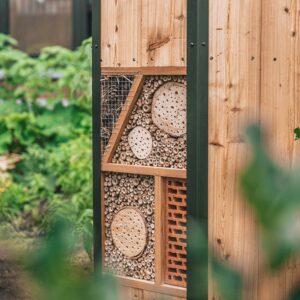Description
The barred grass snake is a good swimmer that prefers to eat amphibians. In mid-June, the females lay up to 40 eggs in places with high temperatures and humidity and leave them there. In the past, these were mainly manure heaps near farms, but nowadays they use compost heaps and special breading grounds.
It is important that the heap maintains a temperature between 25 and 30°C. It should be loose enough to allow the female to move through it easily and to allow oxygen to enter. Access to the water is especially important. The eggs are usually deposited in the heap at a depth of 20 to 60 cm. The heap must also remain wet, a hole at the top ensures that rainwater runs into the center. In August the baby snakes hatch from their eggs.
PLACEMENT
- Maximum 4 m from open water.
- There must be vegetation in the immediate vicinity for shelter and supply of materials.
- Quiet area without traffic and little public.
- The heap should be at least half in the sun. As a cold-blooded reptile, the barred grass snake likes to sunbathe.
- The best time to build an egg-laying heap is between mid-March and the end of April.
MAINTENANCE
You can check whether there are young by:
1. Carefully dig through the heap at the end of March in search of eggshells.
2. Place a tarpaulin against the sunny side of the heap at the end of September. The young crawl under here and can be counted.
After a year or two, the heap decreases and the pile must be replanted. Successful breeding grounds are revisited barred grass snake In that case, the location should remain unchanged.
Work on hotbeds should be carried out between mid-April and the end of May or in October. This way, clutches and wintering animals are not damaged or disturbed.









